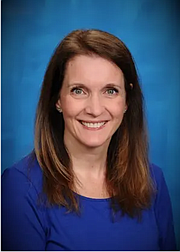Idaho’s dead-last student spending rankings are infamous – but how or whether to improve them is a point of contention
CARLY FLANDRO/IdahoEdNews.org | Coeur d'Alene Press | UPDATED 2 years, 5 months AGO
Idaho is infamous for its dead-last rankings in per-pupil spending.
Every year, newspaper headlines around the state broadcast Idaho’s latest low ranking – but it’s not really news. It’s been the same story for at least a decade.
So it was no surprise when the most recent data from the Census Bureau and the National Education Association pegged Idaho in last place with less than $10,000 spent on each student. The top states spent more than twice that amount.
The numbers seem to paint a dismal picture – that Idaho doesn’t care to invest in its kids.
But the state will be spending a historic amount on public education next fiscal year and already allots about 55% of its budget on K-12 funding – a higher percentage than most states.
And more funds might be on the way. Reclaim Idaho’s Quality Education Act, which will be on the ballot this fall, would increase K-12 funding by $323 million a year (state officials and opponents say the initiative would also repeal 2022 income tax cuts, bringing the overall tax hit to $573 million annually).
District officials and the state teachers’ union say more money is needed to fund salaries and day-to-day operations. And with Idaho’s record-breaking surplus, it seems the state could spare some more change.
However, education reformers argue that more money isn’t the right fix. Idaho’s public education funding formula needs to be revamped first, they contend, so funds can be more equitably distributed to the economically disadvantaged and to low-performing students who need them most.
Basically, the policies that guide how Idaho’s education money is dispensed is like a leaky pipe — more water (funds) would be meaningless without patching the hole (funding formula).
But Idaho administrators say both are needed — more money and a funding formula change.
To further complicate matters, per-pupil expenditure (PPE) numbers seem to have no impact on student achievement on statewide tests like the ISAT, which brings into question whether the number has any significance.
So while Idaho’s last-place PPE ranking is clear, what to do about it is anything but.
Amid historic education funding, districts still scramble to make ends meet
Since Gov. Brad Little took office in 2019, he has fulfilled his mission to dramatically increase education funding, pumping $203.5 million into K-12 education and $123 million into the teacher salary ladder. Within his first week of being in office, he said education was his “No. 1 priority for our state budget.”
“I know there’s a strong correlation between our education system and the attractiveness of our state to entrepreneurs and businesses,” he said in his first State of the State address. “More importantly, a strong education system helps ensure we keep our best and brightest right here in Idaho.”
But Idaho’s go-on rate has dropped to 37%, a number that has steadily declined since 2017 – even amid this year’s historic $258 million K-12 funding increase.
Superintendent of Public Instruction Sherri Ybarra touted the record-breaking increase last spring and pointed to how it would lead to bonuses and pay increases for Idaho’s teachers, staff, and administrators, as well as help fund early literacy initiatives like all-day kindergarten.
“I am thrilled that this budget continues to make support for public schools such a high priority,” she said.
But as Idaho’s politicians celebrate the increase, a local district official said it’s still not enough to fund day-to-day education needs.
Scott Maben, the spokesperson for the Coeur d’Alene School District, was preparing one recent evening for a community presentation on a 10-year, $80 million plant facilities levy.
The levy – which goes up for a vote on Aug. 30 – requires 55% support to pass. If approved, most of the money would go toward maintenance and repairs, and 25% would go to improved safety, security, and technology.
Maben said the facility repairs and maintenance are essential and can interfere with learning if not addressed. For example, if an HVAC system goes down during the winter and heat is lost, school would have to be canceled. And such fixes tend to get more expensive the longer they’re delayed, so it’s better to address them early. But how to afford them is another question.
“We don’t have a source of funding for this. The state doesn’t provide sufficient funding for operations and salaries,” he said. “Idaho’s always on the bottom of funding public education in every survey, report and study.”
But Maben is hoping for some more state funding, in light of Idaho’s $1.4 billion surplus.
“A lot of us are looking to the governor’s office and the Legislature to make those one-time investments,” he said.
Lisa Arnold, superintendent of the Lakeland Joint School District, also lamented the lack of adequate state funding.
“On average, the state only covers about 70-75% of salaries and benefits,” she said. “Local patrons have had to support the rest through levies, and it’s the same throughout the state.”
Lakeland has a $42 million general fund budget, supplemented with a $9.5 million levy that becomes about 22% of the district’s budget.
Last year, 89 of Idaho’s 115 school districts relied on local supplemental tax levies, with patrons paying out a record $218.2 million. Idaho’s nearly 80 charter schools are not allowed to levy taxes.
Bonds are not accounted for in PPE calculations but the funds they generate are essential to learning
Student safety concerns and population growth are putting the squeeze on districts to build new schools and update existing ones, expenses the state doesn’t pay for. Districts must ask local taxpayers to approve bonds — and that doesn’t always happen because typically a two-thirds supermajority is needed for the long-term debt.
The Middleton School District is seeking a $59,435,000 school bond on Aug. 30 to build a new elementary school – its Mill Creek Elementary is at 123% capacity, and hallways, the staff lounge, the lunchroom, the music room, and essentially any other available space is being used for instruction. But similar bonds have failed regularly in the community.
The Idaho Falls School District is floating a $250 million bond for new and updated schools — the largest proposed bond in Idaho history. Superintendent James Shank said the continued population growth in the district has led to overcrowded elementary schools.
“Bonds are important for school districts because they’re really the only way to fund substantial capital projects,” Idaho Falls spokesperson Margaret Wimborne said. “We do receive money through the lottery for maintenance, but it’s just not enough money to build a new school or do extensive renovations and updates.”
Building and maintenance costs may seem to have a secondary impact on learning (when compared to teacher salaries, for example), but district officials say that having a safe, warm, clean, uncrowded classroom is essential.
Yet it’s worth noting that any money spent on what are called capital improvements are not considered in per-pupil expenditure calculations. Part of the reason they’ve been excluded is because they can skew results. If a district builds a school one year, their PPE number would skyrocket and not accurately represent the average spending on students in a typical year.
That example shows just one way in which PPE numbers don’t necessarily show the whole picture of money spent on students in a given district.
But that doesn’t change the fact that Idaho still lags behind on PPE.
Read more about per student spending in Idaho at IdahoEdNews.org.








